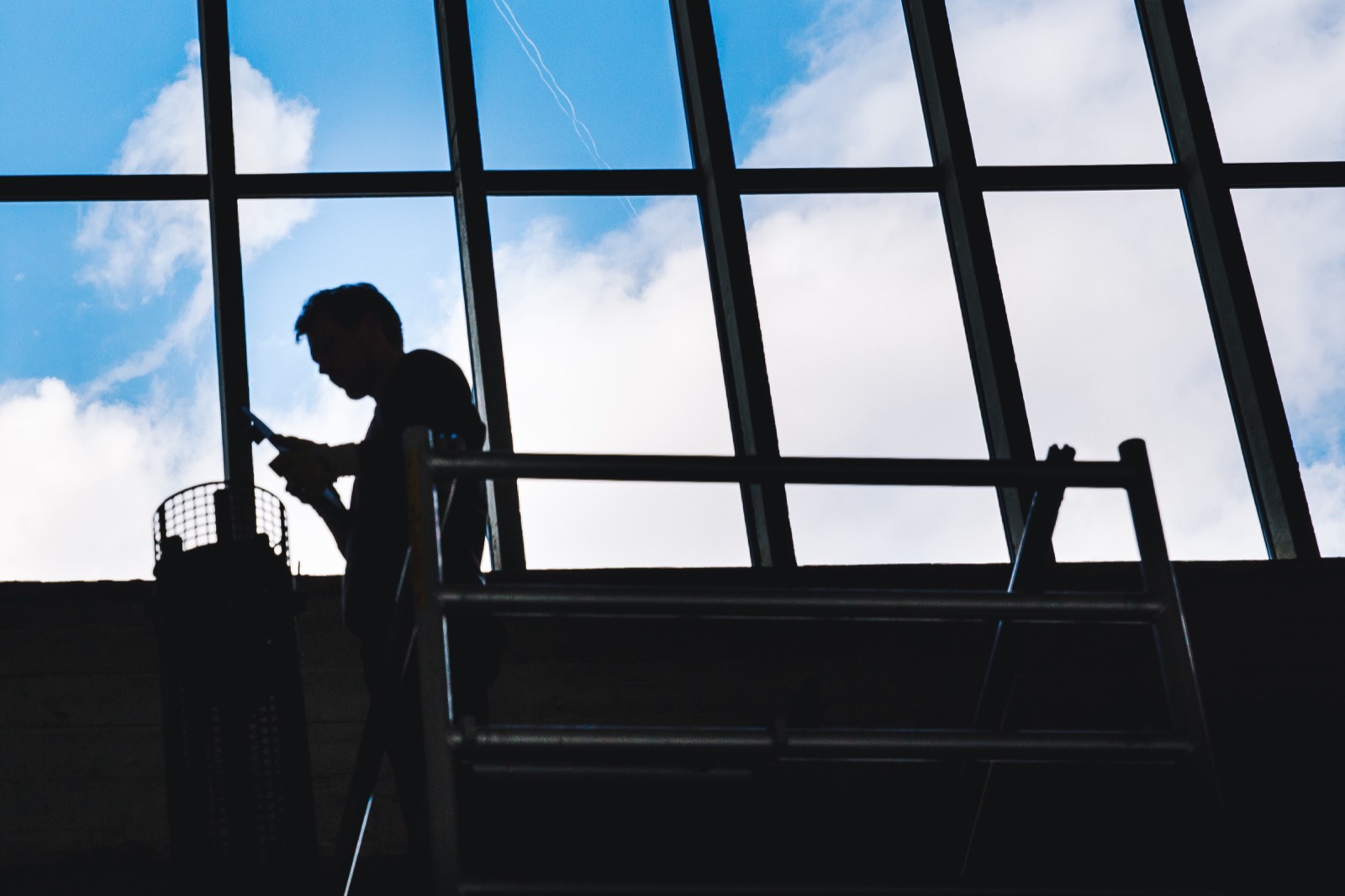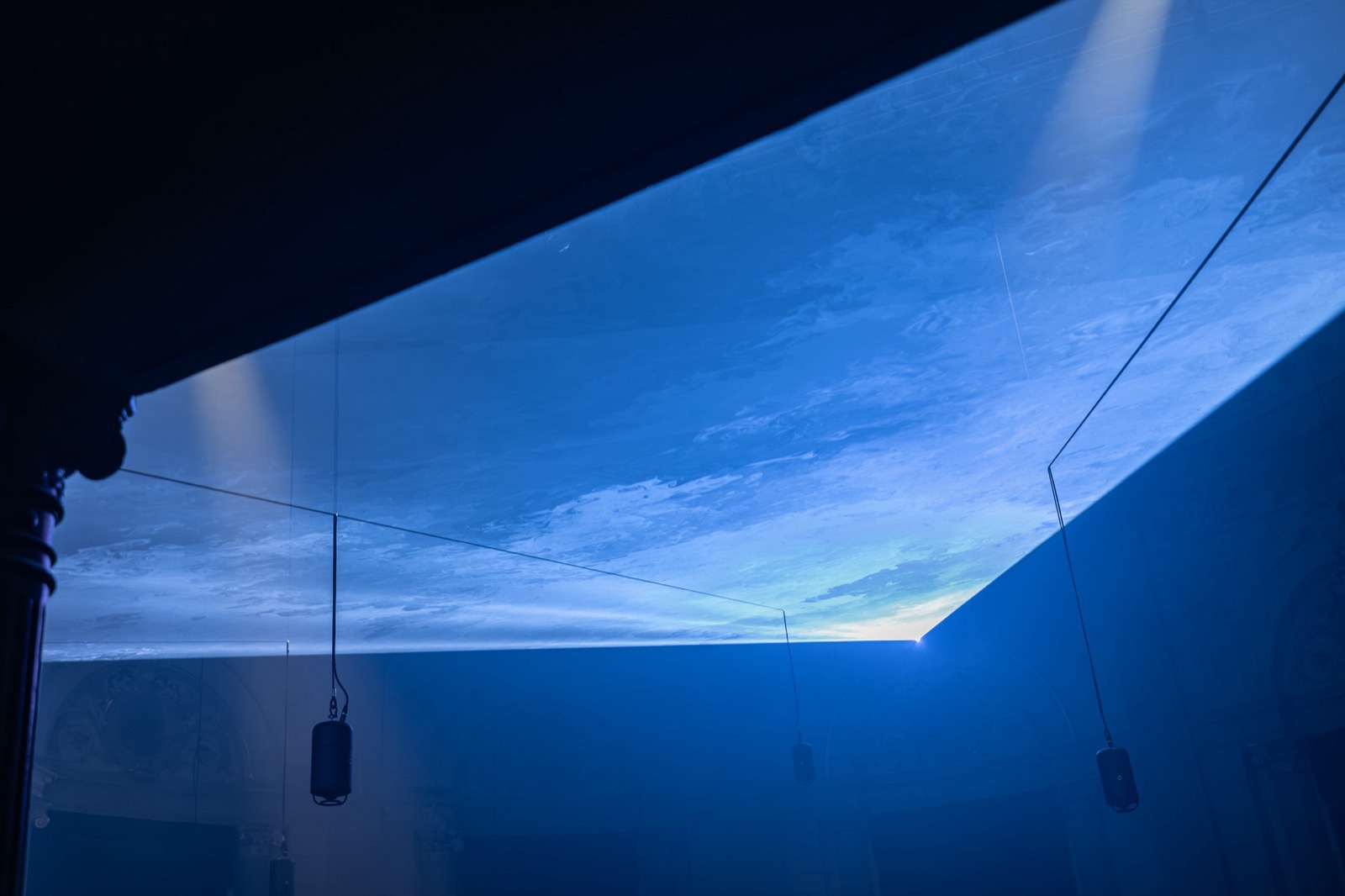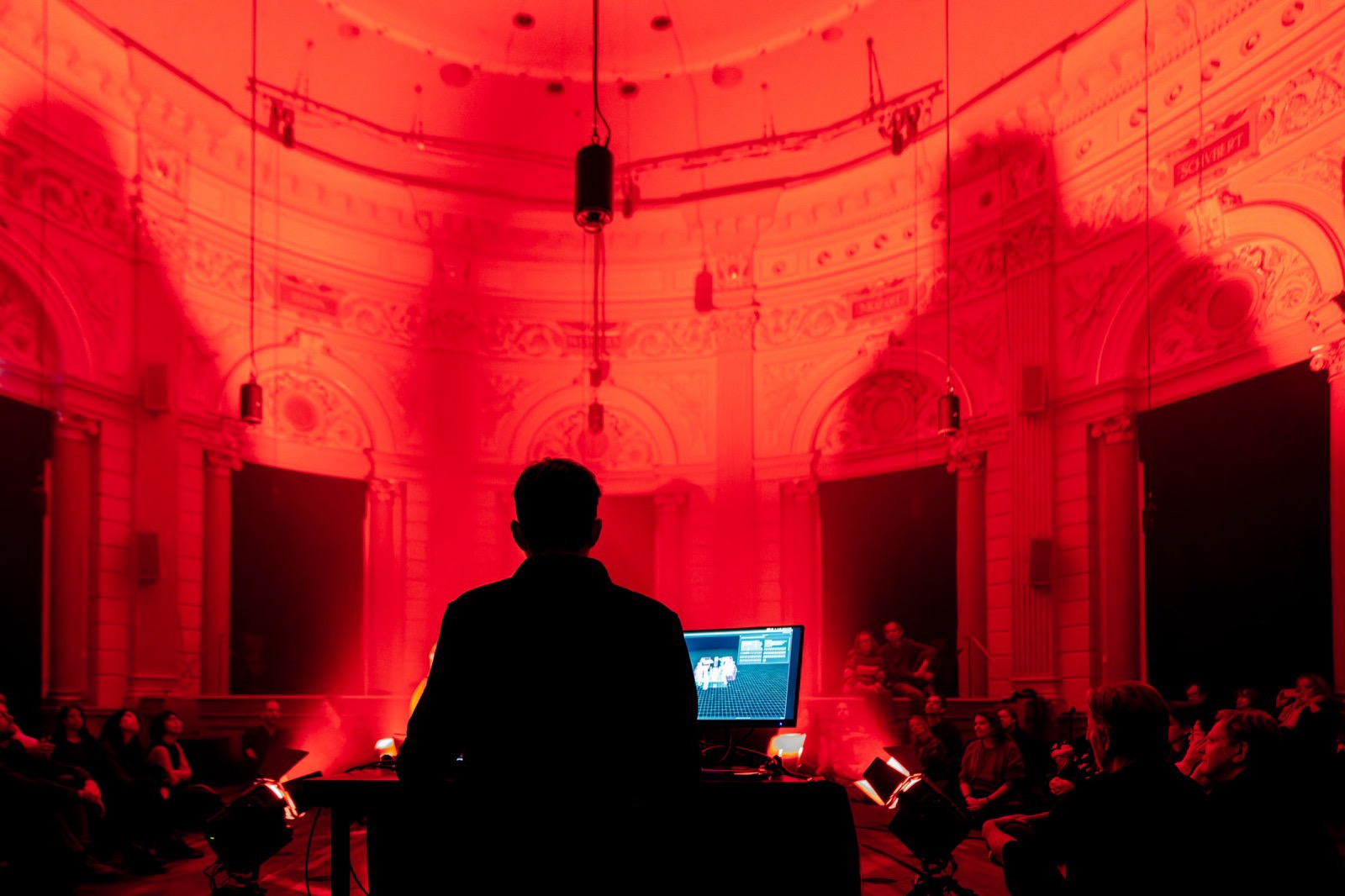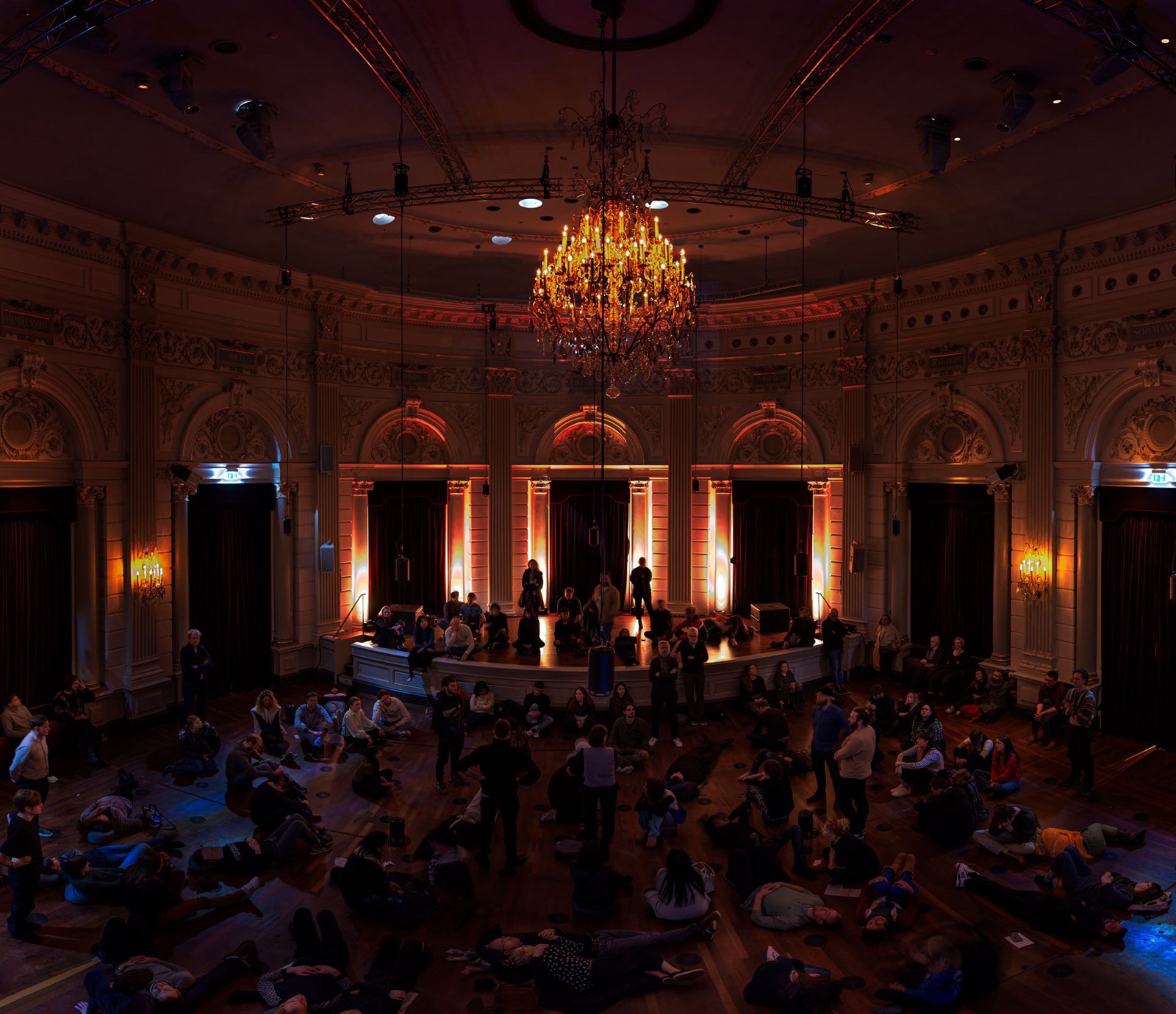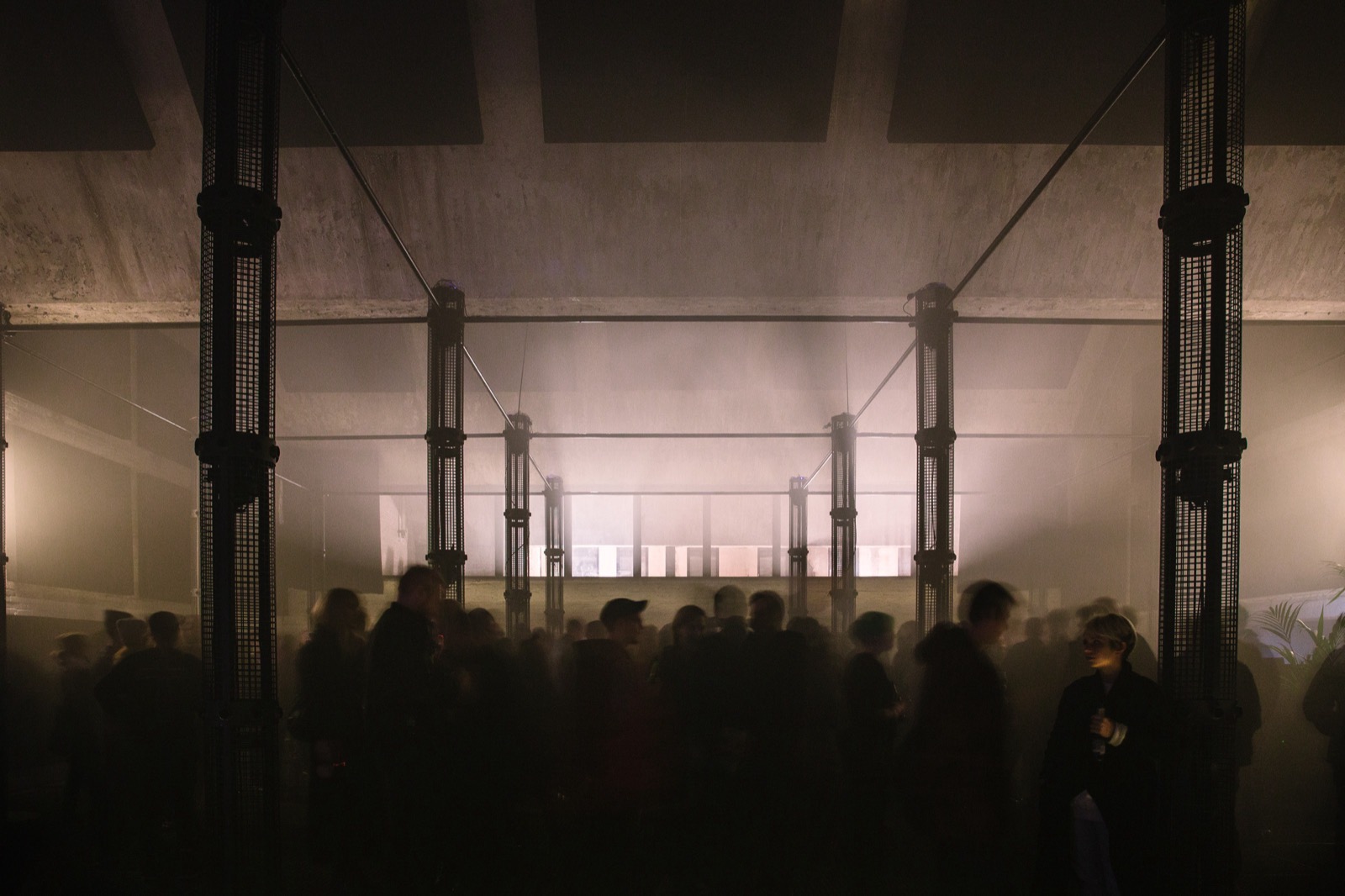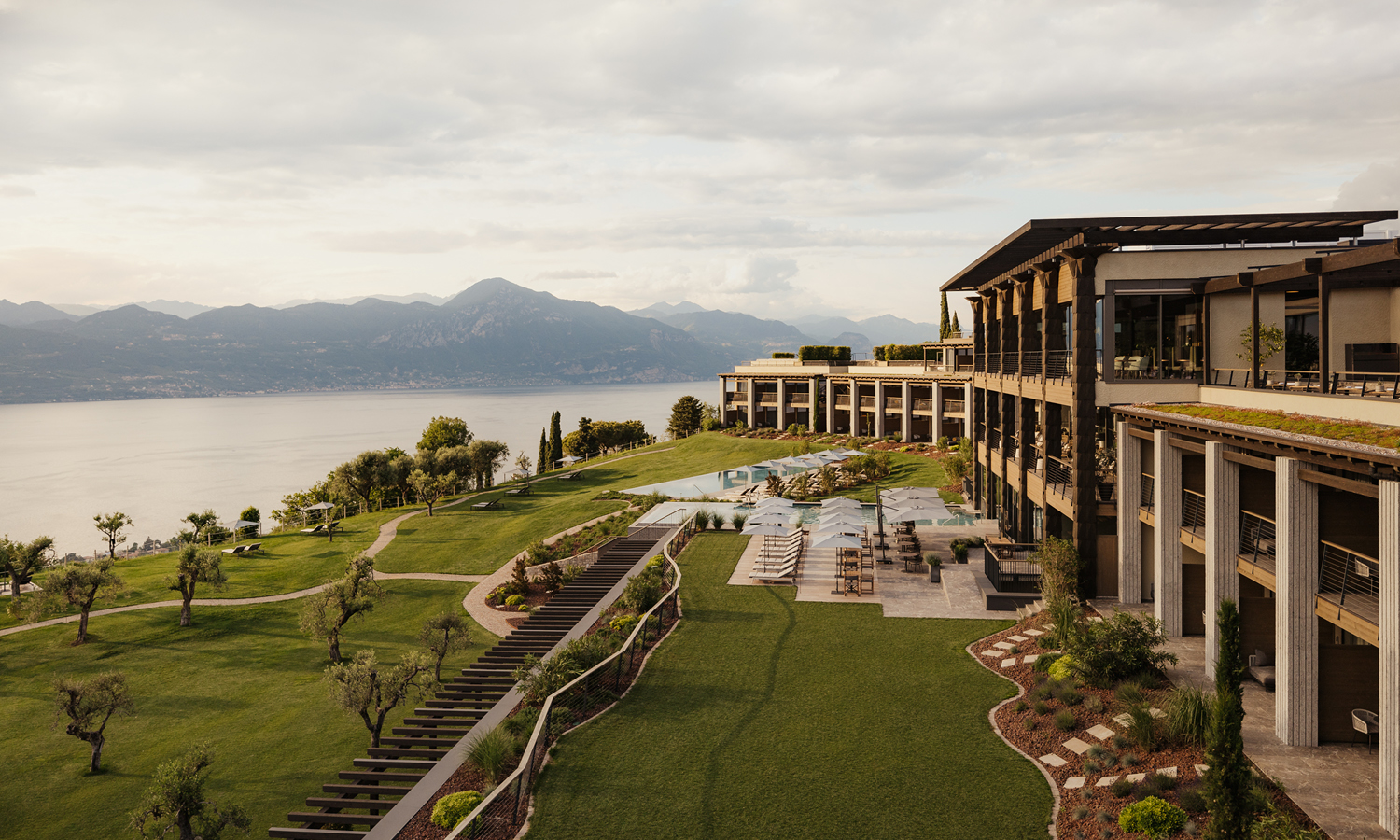The truth is, these roles are intertwined. Each project brings opportunities to customize, adapt, and push the instrument in new directions. Over the years, I’ve learned when to step forward as an artist and when to remain in the background as a craftsman. And often, others’ perspectives on my work surprise me, helping me see new dimensions and pushing me to keep exploring.
Could you tell us more about the “Sound Chamber” and “Saal 1” installations? What ideas or questions are you exploring through these works?
My involvement in these projects is more supportive than central, but I can share a few insights. The Sound Chamber uses gongs and resonating materials instead of speakers. By attaching exciters and applying 4DSOUND’s spatial principles, the objects themselves become sound sources, and physical matter resonates. I contributed some customized software — I can rarely resist! — and I’m curious to see the final results. Saal 1, in collaboration with Paulin, Paulin, Paulin, centers on a large sofa surrounded by 4DSOUND. Visitors recline in near-darkness while the sofa itself produces sound. The comfort and intimacy of the setting turn listening into something physical, becoming one with the object inside a vast space. Context matters hugely in how sound is experienced, and this piece highlights that beautifully.
Beyond the technical, what do you see as the poetic or anthropological dimension of spatial sound?
Sound is fundamental to life, it helps us navigate the world, detect danger, and experience space, while also enabling music and art. Throughout history, sound has shaped rituals, from the vast reverb of cathedrals to the intimate resonance of acoustic instruments. The poetry of sound lies largely in the listener’s imagination. I’m drawn to abstract forms, where the audience completes the work themselves. Unlike very concrete art, which tells you what to feel, abstract sound opens space for personal interpretation and self-discovery. Anthropologically, spatial sound reshapes rituals of listening. The medium itself influences how we sit, listen, and engage. Many people who experience 4DSOUND describe feeling transformed, as though their perception of sound — and sometimes the world — has shifted. Like leaving a powerful film or performance, they carry that altered consciousness with them. In this sense, spatial sound creates both poetic depth and cultural rituals of shared, transformative listening.
Looking ahead, how do you imagine SPATIAL sound evolving in the next decade socially, artistically and culturally?
Socially, spatial sound is already becoming more accessible as multi-speaker setups spread into universities, studios, and venues. As people tire of shallow digital consumption on phones and crave deeper experiences, spatial sound offers a way to disconnect and immerse, more like a spa for the mind than conventional entertainment. I imagine spaces where people regularly go to refresh themselves through listening. Artistically, I expect a growing diversity of approaches. While spatial sound can deliver spectacle and intensity, it is equally powerful in minimalism, a single sound moving through space can be more profound than a dense mix. As artists internalize this way of working, spatial composition will become a discipline in its own right, integral to theaters, music venues, and tours.
Culturally, I hope spatial sound claims a lasting place alongside other art forms. Audiences today are “cultural omnivores,” embracing everything from classical to rave; spatial listening will be curated as part of these broader experiences. The hope is that it remains driven not only by industry hype but by a passionate community of creators and listeners who nurture its deeper meaning. SPATIAL Festival embodies that spirit on such an incredibly ambitious scale, I couldn’t be more excited!
 https://www.nastymagazine.com/wp-content/uploads/2021/10/la-jungle-spotify-image-scaled.jpg
1794
2560
Editor Nasty
https://www.nastymagazine.com/wp-content/uploads/2015/02/new-logo-basker-WHITE4.png
Editor Nasty2021-10-23 13:28:102024-10-10 15:54:29Soundscapes vol.71 / La Jungle
https://www.nastymagazine.com/wp-content/uploads/2021/10/la-jungle-spotify-image-scaled.jpg
1794
2560
Editor Nasty
https://www.nastymagazine.com/wp-content/uploads/2015/02/new-logo-basker-WHITE4.png
Editor Nasty2021-10-23 13:28:102024-10-10 15:54:29Soundscapes vol.71 / La Jungle
